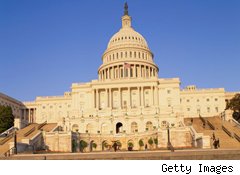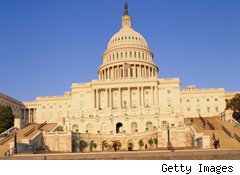 Historians will look back on Washington’s bailout of GM and Wall Street as the right move. That’s because it’s now clear that the costs of doing nothing would have been far higher than the expected losses. Better yet, it turns out that the U.S. taxpayer may suffer only limited losses on this economic Hail Mary pass.
Historians will look back on Washington’s bailout of GM and Wall Street as the right move. That’s because it’s now clear that the costs of doing nothing would have been far higher than the expected losses. Better yet, it turns out that the U.S. taxpayer may suffer only limited losses on this economic Hail Mary pass.
Back when the government was making its decisions about bailouts, there was substantial concern that they wouldn’t work and that the entire investment of taxpayer’s money would go to waste. But in weighing the costs and benefits, it’s clear that the decision-makers came to the conclusion that the dangers of sticking with a policy of free-market, laissez-faire capitalism — millions of people losing their jobs (in the case of a GM liquidation) and the collapse of world’s financial system (which would have made everyone’s bank deposits and money market funds worthless) — were too high.
Now, it looks like the TARP will lose only a small fraction of the $386 billion it invested in propping up companies (out of the $700 billion it had available). The bailout of GM could break even, and if it doesn’t, it will cost taxpayers a relatively small sum. Bailing out the financial system during the far less terrifying Savings & Loan Crisis of the early 1990s under the first President Bush cost far more: $220 billion. On a risk-return basis, historians will view TARP as having been a cheap way to avert a global disaster.
adsonar_placementId=1505951;adsonar_pid=1990767;adsonar_ps=-1;adsonar_zw=242;adsonar_zh=252;adsonar_jv=’ads.tw.adsonar.com’;
With GM’s $23.1 billion initial public offering in the news this week, it’s worth pointing out that the risk to taxpayers of this bailout still looks to be the highest. In 2009, the U.S. invested $43 billion in GM stock through the TARP, and extended a loan of $7 billion, which GM repaid in April 2010, according to .
On Thursday, GM raised $15.8 billion, selling 478 million shares at $33 apiece. This allowed the Treasury to reduce its stake in GM from 61% to 37%, reports Bloomberg. But in order for the government to completely recoup the $43 billion it invested, those remaining shares will need to gain 65% to about $54.40 — the price at which the Treasury’s remaining 500 million shares would be worth $27.2 billion.
Overall, TARP is expected to lose a comparatively modest amount. According to the , an October 2010 tally estimated that its total cost to taxpayers would be less than $50 billion, with the other big potential sources of losses being the bailouts of American International Group (AIG), Fannie Mae and Freddie Mac.
It’s not over yet, but it’s beginning to look like the biggest losses from TARP could be the losses of congressional seats due to public anger at those who supported it.
Get info on stocks mentioned in this article:
AIG
Manage Your Portfolio


Leave a Reply